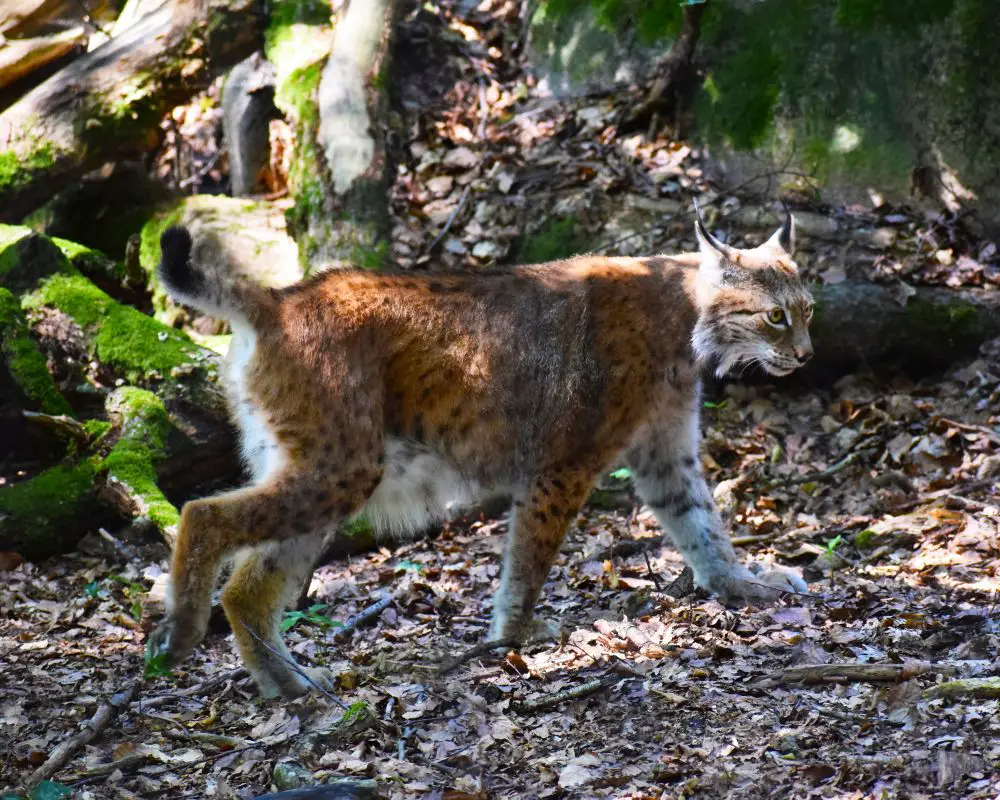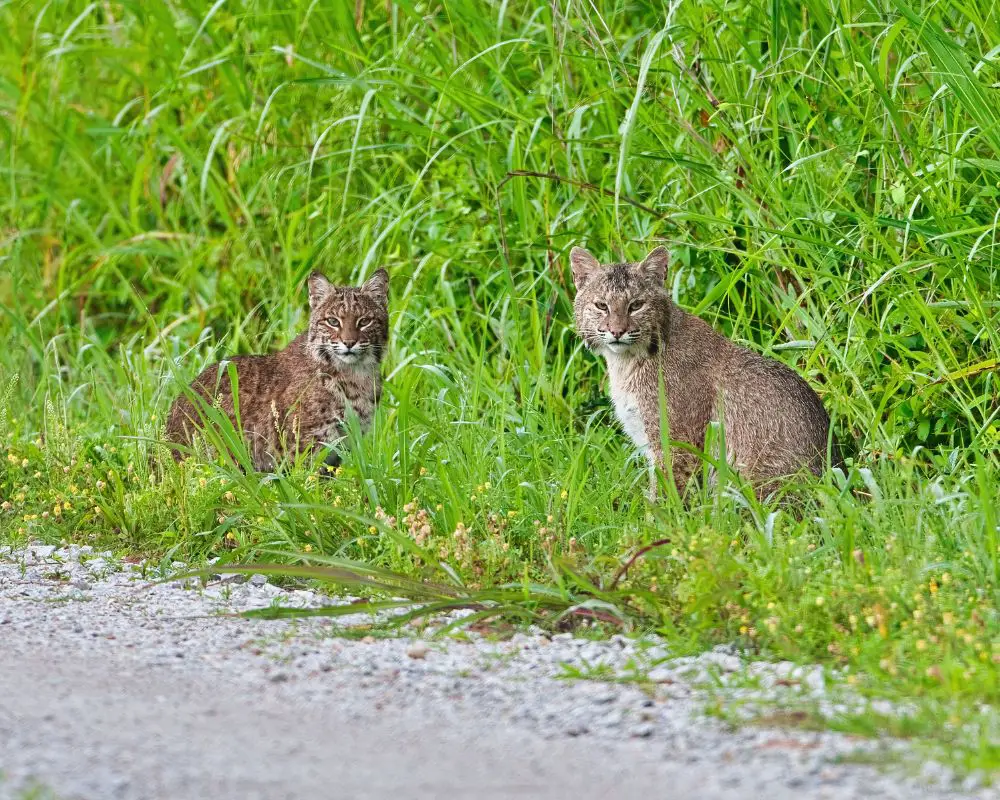Bobcats are among the most elusive and mysterious predators in North America. With their stealthy hunting skills and solitary lifestyle, these wild cats have earned a reputation for being fierce and independent. But is this reputation entirely accurate?
Many people wonder if bobcats travel in pairs, packs, or groups, and what factors influence their social behavior. In this article, we’ll explore the fascinating world of bobcat social behavior and provide insights that may surprise you.
The reality is that bobcats are generally solitary animals, and they do not typically travel in packs. While there may be instances where multiple bobcats interact or share resources, these are the exception rather than the rule.
Bobcats prefer to hunt and travel alone, and they typically only come together with other bobcats during mating season. Even in these instances, their interactions are brief and limited to reproductive behaviors.
While mothers may raise their kittens together until they are old enough to fend for themselves, this is the closest thing to a group or pack that bobcats will typically form. These family units are small and short-lived, and once the kittens are old enough to hunt and survive on their own, they will separate and become solitary like their adult counterparts.
However, what we have said now isn’t the whole truth. Let’s get a deeper look into bobcat’s social behavior:
The Myth of the Solitary Bobcat

Bobcats are often portrayed as solitary hunters, wandering through the wilderness alone in search of prey. However, this common perception may not be entirely accurate. While it is true that bobcats spend much of their time alone, recent research has revealed that they are not always solitary animals.
Explanation Of The Misconception
The myth of the solitary bobcat can be traced back to several factors. For one, these wild cats are highly secretive and difficult to observe in the wild. This has made it challenging for researchers to study their behavior and interactions with others. Additionally, bobcats are highly territorial, meaning that they will defend their home ranges against intruders, making it more difficult for multiple individuals to coexist in the same area.
Evidence That Suggests Otherwise
Despite these challenges, recent studies have shown that bobcats do interact with others of their species more often than previously thought. For example, researchers have observed bobcats sharing food, grooming each other, and even playing together. In some cases, they have found evidence of bobcats living in small groups or pairs, suggesting that these wild cats may be more social than we once believed.
One study, in particular, looked at the social behavior of bobcats in suburban areas, where human development has disrupted natural habitats. Researchers found that bobcats living in suburban areas were more likely to share territories with other bobcats, potentially due to a lack of suitable habitat. In contrast, bobcats living in more remote areas tended to have larger home ranges and were less likely to interact with others.
While these findings do not necessarily mean that bobcats are highly social animals, they do challenge the myth of the solitary bobcat and suggest that we have more to learn about their behavior and interactions with others.
The Social Behavior of Bobcats
Now that we’ve established that bobcats are not always solitary, let’s take a closer look at their social behavior and how they interact with others of their species.
Social Structures And Hierarchies
Bobcats are generally considered to be solitary hunters, but they do have a social hierarchy. Males and females each have their own territories, which they defend against intruders. Within each sex, there may be a hierarchy based on size and strength, with larger individuals having priority access to food and other resources.
Reproduction And Raising Young
Like most cats, bobcats are solitary when it comes to reproduction. Males and females only come together during the breeding season, which typically occurs in the winter. Females give birth to litters of 1-6 kittens, which they raise alone for several months. Once the kittens are old enough to fend for themselves, they will disperse and find their own territories.
Interaction With Other Species
Bobcats may not interact with other bobcats frequently, but they do interact with other species in their environment. For example, they may share prey with other predators, such as coyotes and foxes. They may also compete with other predators for resources, such as food and water.
Overall, bobcats may be solitary hunters, but they are not entirely solitary animals. Their social behavior is more complex than we once thought, and it is important to continue studying and learning about these fascinating wild cats. In the next section of this article, we’ll take a closer look at the reality of bobcat groups and what factors influence their social behavior.
Do Bobcats Travel in Groups?

The Reality Of Bobcat Groups
While bobcats are not typically considered to be social animals, there is evidence to suggest that they do form groups in certain situations. These groups can range in size from just two individuals to larger groups of up to five or more.
Factors That Influence Group Formation
The formation of bobcat groups can be influenced by a variety of factors, including:
Resource availability: In areas with limited resources, such as prey or water, bobcats may be more likely to form groups in order to share these resources.
Territory overlap: When multiple bobcats’ territories overlap, they may come into contact with each other more frequently, which could lead to group formation.
Breeding season: During the breeding season, male and female bobcats may come together in groups in order to mate.
Evidence Of Group Behavior
Studies have shown that bobcats do occasionally travel and hunt in groups. For example, in one study, researchers observed a group of four bobcats traveling together and sharing a kill. In another study, researchers observed a group of three bobcats hunting together in a coordinated fashion.
While these observations suggest that bobcats can form groups, it’s important to note that they are still primarily solitary animals. These group behaviors are likely situational and dependent on the specific circumstances that the bobcats are facing.
The Bottom Line
Bobcats are generally considered to be solitary animals that prefer to hunt and travel alone, and they typically only come together with other bobcats during mating season. However, recent studies have shown that they are not always solitary animals. Bobcats may share food, groom each other, and even play together. In some cases, researchers have found evidence of bobcats living in small groups or pairs, suggesting that these wild cats may be more social than previously thought.
While bobcats may be solitary hunters, there is evidence to suggest that they do form groups in certain situations. These groups can range in size from just two individuals to larger groups of up to five or more. Factors that can influence group formation include resource availability, territory overlap, and the breeding season.

Hi, I’m Ali Tarek, the founder of Animalsman. I’ve always been passionate about pets, especially dogs and cats, and I created this website to share practical tips, easy recipes, and helpful care advice for fellow pet lovers. My goal is to make pet care simple, enjoyable, and accessible for everyone. When I’m not writing or curating content, you’ll usually find me spending time with my furry friends or learning new ways to keep them happy and healthy.



